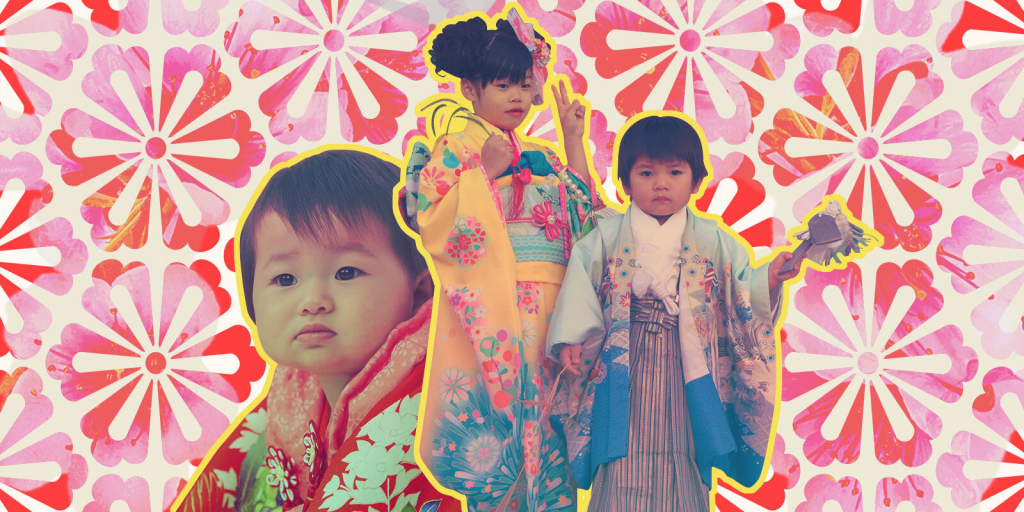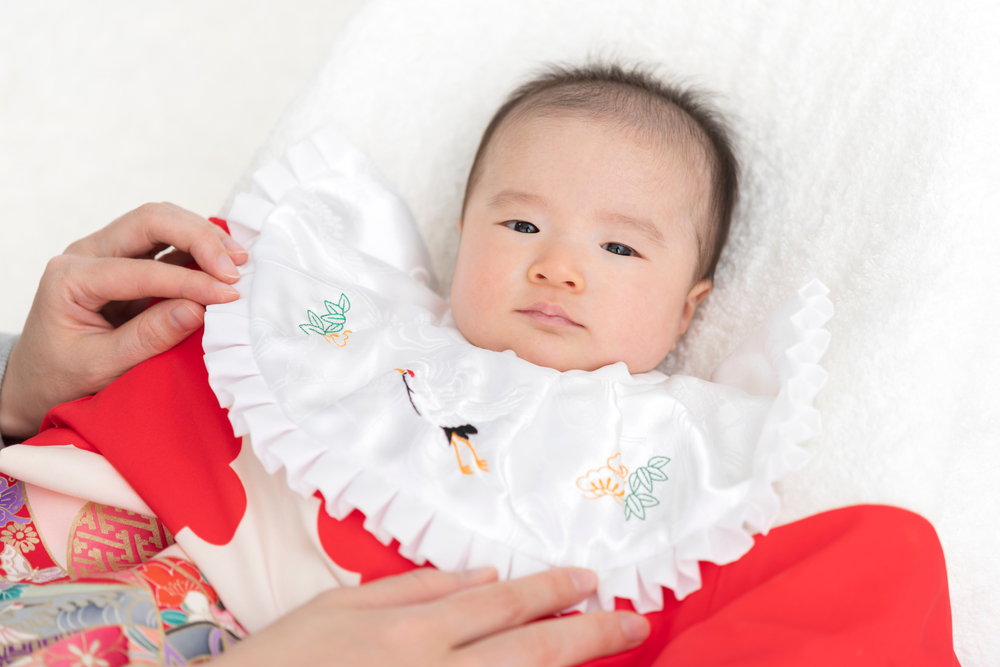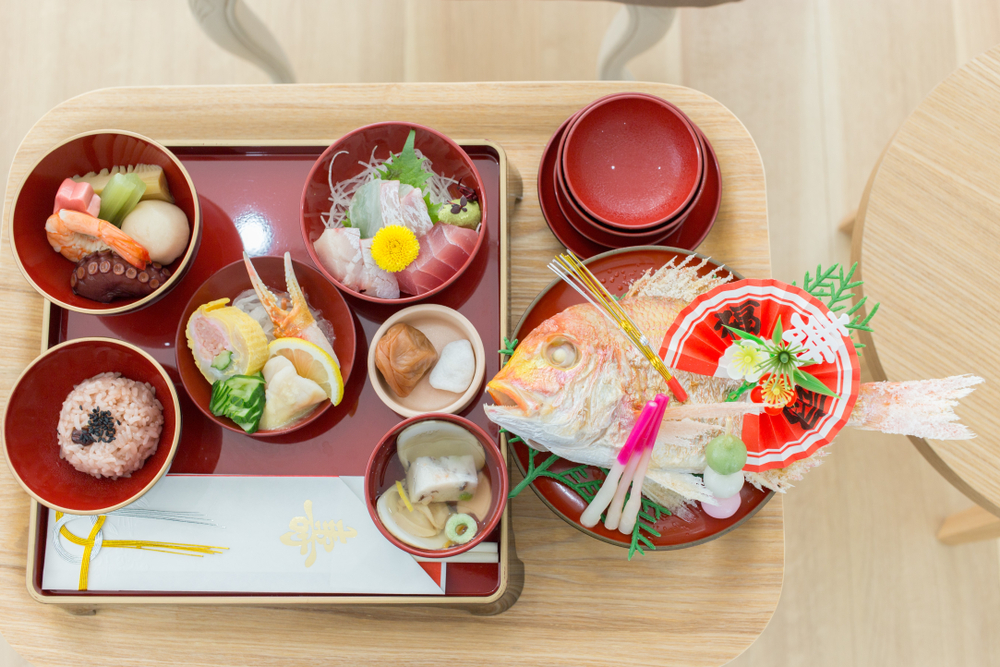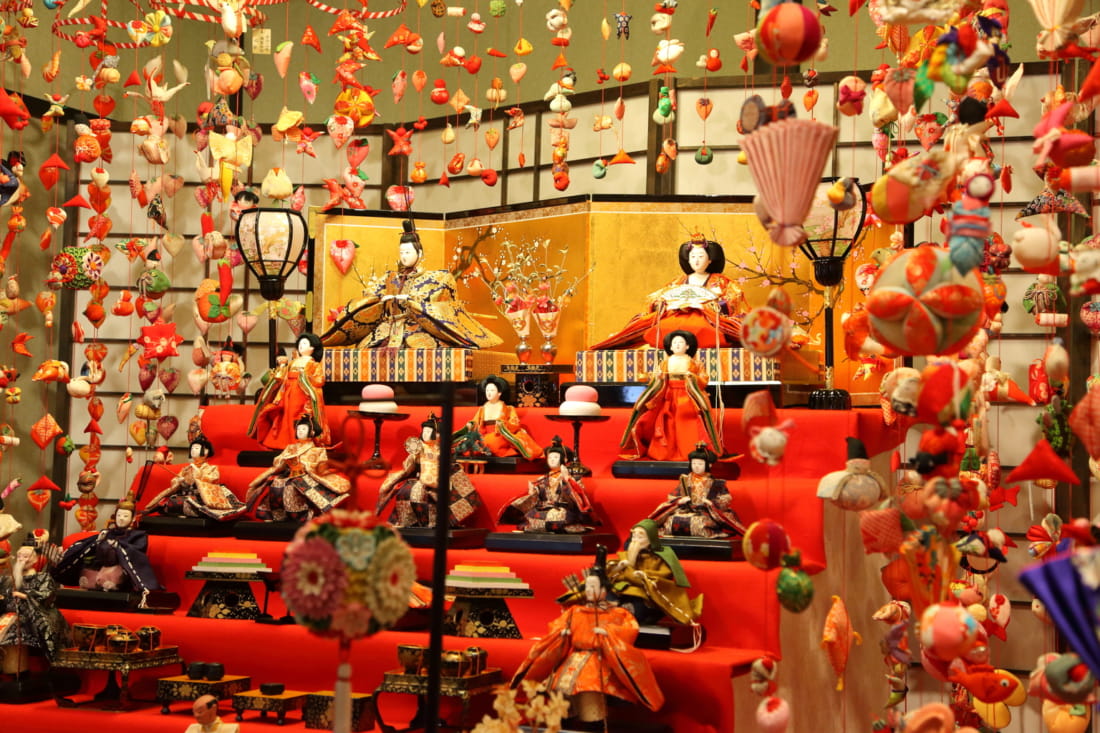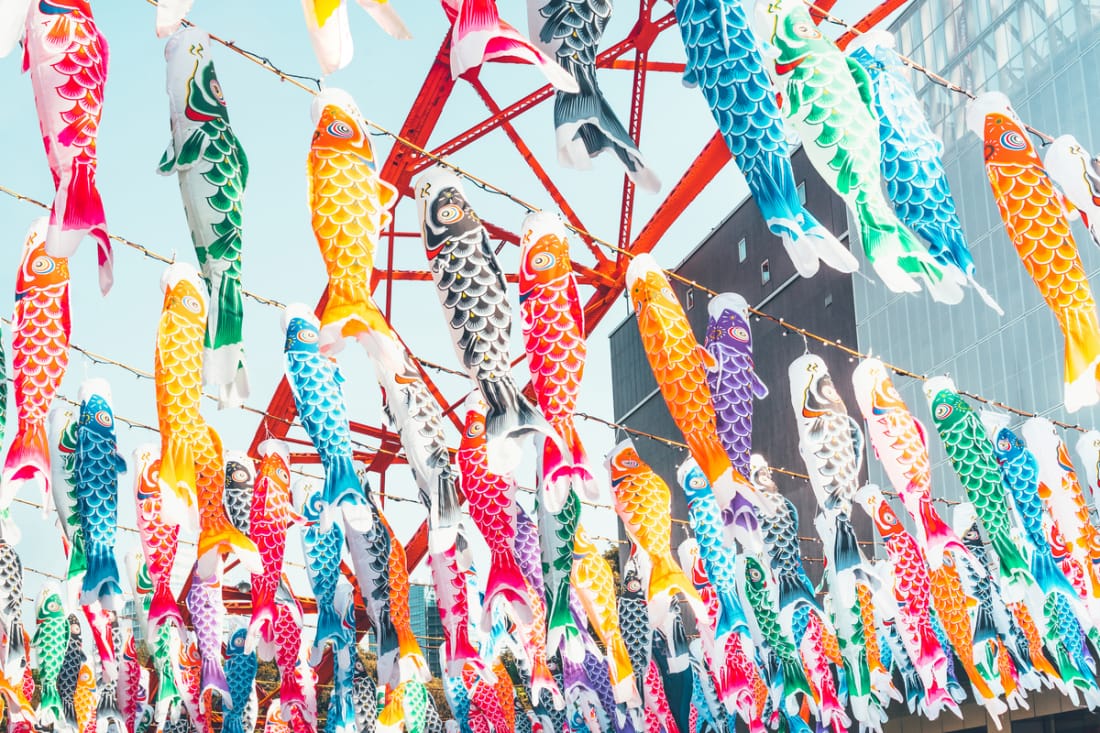Bringing a new life into the world is undoubtedly one of the most miraculous moments.
And yet, no matter how much a bundle of joy your baby could be, pregnancy, motherhood and parenthood surely is a long winding road filled with many ups and downs along the course.
In Japan, there are many traditional ceremonies and rituals related to childbirth and child protection that date back to ancient times. While these customs are no longer mandated, many of them still keep their purpose and continue to be passed down through the generations.
If you are a mom or a new mother-to-be, here are some of the quintessential Japanese traditions and rituals for you to consider.
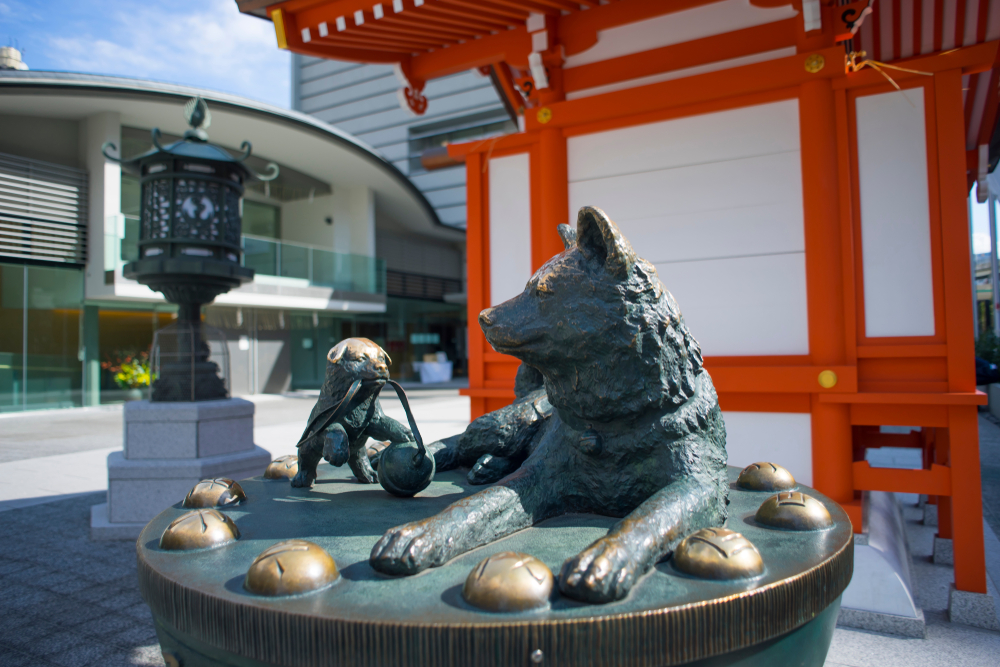
Suitengu Shrine | T.Dallas / Shutterstock.com
Anzankigan & Inu no Hi – Prayers for Safe Delivery & Dog’s Day
In Japan, people have metaphorically compared anzan (easy birth) to a dog’s delivery, which tends to be relatively easy, simple and multiple. According to the Chinese zodiac calendar, the sign of the dog is allocated on the 12th place and due to its influence, every 12th day of the month is designated as “inu no hi” in Japan.
Traditionally, once women reach their fifth month of pregnancy, they are encouraged to visit a temple or shrine on the 12th day of that month. They will be blessed with prayers and gifted a fukutai (maternity belt) at the end of the ceremony.
Obitoke-dera and Hokke-ji temples in Nara are some of the highly acclaimed temples dedicated to anzan in the Kansai region. Whereas, Suitengu in Tokyo and Daigyoji in Kamakura are some of the famous places around the Kanto area you could also visit.
Typically, the cost for the ceremony starts from around ¥5,000.
In some cases, women are welcome to join this ceremony outside of the dog’s day and they may also choose to receive this blessing remotely if they are not able to attend the ceremony physically.
Omiyamairi
Omiyamairi is a traditional day to celebrate the first monthiversary of your baby joining the world. It is also considered a special moment for them to spend a fancy day out with the entire family.
Typically, omiyamairi involves a family visit to a local shrine to report the birth of their baby to Ubusunagami, the guardian deity of the child’s birth place.
The ceremony usually takes place approximately 30 days after the baby’s birth. For boys, it is considered optimal to hold it after 31 days, yet for girls it’s 32 days. However, in recent years, people do not tend to follow these numbers and select a preferable date that is convenient for attendees.
On this occasion, the baby is dressed in a distinguished kimono, but if you don’t have this handy, you may also dress them in a white baby dress and cape. Sometimes, babies are gifted himosen (a bag of money) tied on their obi as a wish for them to have no trouble with money in the future.
Okuizome
Okuizome is a celebration to your baby’s first bite and this tradition has been cherished since the Heian Period in hopes that children have sufficient food throughout their lives.
The ceremony usually is set after the 100th day from the baby’s birth, and it involves a feast that typically is comprised of whole fish, steam red rice, clear soup, pickles and a stewed dish. The menu is too early for toddlers to munch on, so in most of the part they only sample a bit of the food.
Traditionally, hagatame-ishi (a stone for chop sticks) and lacquer cutleries are prepared specifically for the ceremony and these are differentiated as red for boys and black with red inside for girls.
Hinamatsuri – Hina Doll Festival
Hinamatsuri, aka hina doll festival, is an annual celebration set on the 3rd of March that wishes for a prosperous future for girls. As you can infer from the name, this special day is predominantly linked to dolls known as hina dolls. These dolls are dressed in attires of Heian aristocrats and usually the empress and emperor are assembled in pairs along the hinadan (stepped red carpet). In some cases, the hinakazari (doll set) may include dolls of servants and musicians as well.
On the day, close family and friends gather around the decoration and celebrate with special food such as hina arare (crackers), hishi mocha (rice cake), amazake (sweet sake), clam clear soup and chirashi sushi.
The 3rd of March is also historically known to be one of the gosekku (five seasonal festivals) and is symbolized with peach blossoms. The beautiful spring colors of these flowers are also something exciting to look forward to during this celebration.
On a side note, there is a superstitious belief that if hina dolls are left unpacked, the girl will wed late or stay unmarried.
Tango no Sekku & Kodomo no Hi
Tango no sekku is another seasonal festival along with peach blossoms. The day is symbolized with shobu (irises) and traditionally people wished for their happiness and health in a shobuyu – a bath with floating iris leaves. This particular custom evolved during the Nara Period, but features of wishing the prosperity of boys were further induced during the Edo Period.
The similarity in words between the Japanese iries and shobu (martial spirit) is said to be the reason behind this correlation, thus decorations that resembles the power of samurai, such as kabuto (armor), koinobori (carp streamers), and mushya ningyo (samurai doll) were added to the original symbolisms.
Special rice cakes such as kashiwa mochi and chimaki are some of the delicious treats family and friends snack on during the festivity.
In recent years, the 5th of May is officially recognized as Kodomo no Hi (Children’s Day) and due to this change, the day encompasses celebrations for all children regardless of gender. Be though as it may, the culture of celebrating boys’ first seasonal festival still prevails.
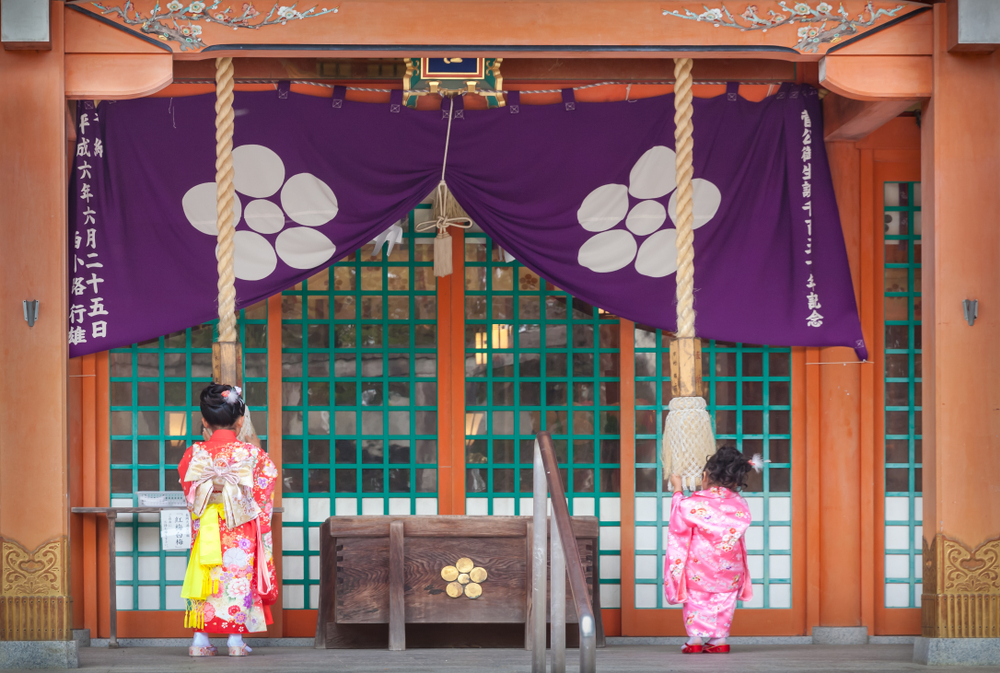
EvergreenPlanet / Shutterstock.com
Shichi-Go-San
Shichi-Go-San, which literally translates to the Japanese numbers of 7, 5 and 3, is a celebration for children who reach these specific age groups.
The tradition originated during the Edo Period under Tokugawa Shogunate and gradually spread as a national culture that is now set annually on the 15th of November.
Usually girls attend their ceremony in a kimono at a temple or shrine at ages of 3 and 7, whereas boys join in their hakama at the age of 5. However, these allocations vary across regions and families, thus checking up your local customs is recommended.
Children who attend the ceremony are usually gifted with a big bag of candies called chitose ame.

